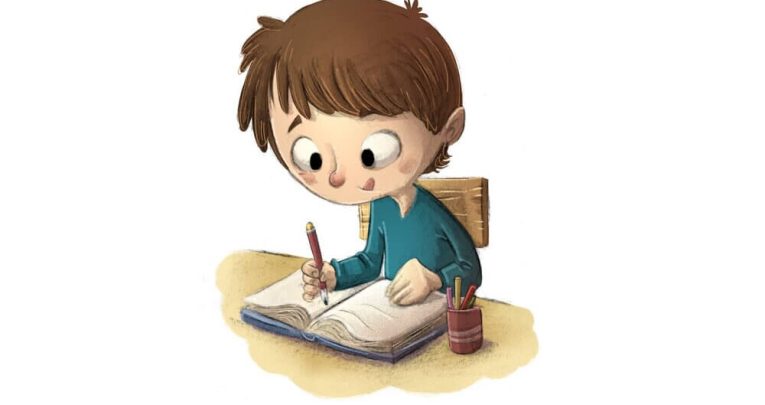KS1 grammar – how a new approach to writing improved outcomes

Jasmine Kay shares how her school revolutionised teaching writing…

- by Jasmine Kay

We all know as teachers that we are required to teach grammar. However, these lessons can often seem clunky and uninspiring, leading to frustrated teachers and disengaged pupils.
Our school experienced these same challenges, until we shook up the way we approached writing in the classroom. I hope our journey can help inspire those of you that are looking for a new way to communicate this subject, and finally get your class interested in the whats, whys and wherefores of grammar and composition.
Strength to strength
Historically, our writing lessons were often uninspiring. Our staff were left wondering why, despite being taught grammatical rules, pupils continued to make common errors, including missing punctuation and misused homophones.
It didn’t seem to make sense; our children could articulately explain grammatical rules, but were often unable to apply them. Something had to change.
We have since paved a new path for our young writers and we are proud of the journey that we have undertaken as a school.
To start with, reading is now at the heart of our school curriculum, which has transformed the way we deliver our English lessons. We have prioritised a knowledge-based curriculum, which is rich in diversity, language and meaningful experiences.
We’ve also moved away from discrete grammar sessions to more contextualised teaching, transforming our writing process, which previously lacked creativity.
In the past, the children were fixated on cramming impressive terminology and sentence structures into their writing. In hindsight, this was rather robotic, and consequently our students lacked creative flair.
By using books, videos and songs to inspire the writing process, our students are now engaged and their lessons are memorable. We take pride in providing purposeful writing tasks which prepare our children for the real world.
For example, recent notable writing experiences have included writing welcome cards to newly-arrived Afghan refugees in KS2, and replying to humorous text messages from Rapunzel in KS1.
What is contextualised teaching?
A contextualised grammar approach empowers the children to make choices as a writer. It encourages flair and promotes the idea that students make conscious choices about the linguistic patterns they use.
Our pupils are not having to naturally apply taught strategies. For instance, we spend a long time discussing the impact of grammar within texts to show how it can be used to avoid ambiguity and add clarity.
Song comprehension can be an engaging way to entice children within grammar lessons.
In Year 6, we dissect songs including ‘The Fiddler on the Roof’ when teaching the subjunctive voice, which highlights Tevye’s longing for a better life.
We use the song ‘You’re a mean one Mr Grinch’ in LKS2 to explore the use of similes to hyperbolise the Grinch’s foul character, and in KS1, we use ‘You’ve got a Friend in me’ from Toy Story to introduce contractions.
All three of these songs are used to pre-teach a concept that we would like to see within the children’s writing.
Whole-class feedback
Within our verbal conferencing sessions, oral feedback triumphs over monotonous marking comments, which we found were largely unread and negatively impacted teachers’ wellbeing.
In addition to personalised feedback, whole-class feedback is used to address common misconceptions. Within these sessions, we also consolidate objectives taught in previous years to embed spelling and punctuation rules.
We don’t waste time teaching children what they already know, but rather give them gentle reminders along the way to prompt them, which we find is effective in practice.
We also encourage the children within all year groups to facilitate their own and their peers’ learning. Our children are invited to peer correct by adopting the role of Grammar Police Officers.
They wear a helmet and fluorescent jacket while scanning their friends’ work for common errors like missing capital letters. We coach our children to deliver the feedback courteously and this task also encourages children to edit their own work before it is checked by a friend.
Structured support
Teachers are a school’s most important resource, especially for those pupils that may require some extra support, such as interventions.
Trending
If children are leaving the classroom for an intervention group, it is vital that the work they are doing away from their peers is more important than what is going on inside the classroom.
When the purpose of an intervention group is to regurgitate facts, progress can be limited. Instead, they should be encouraged to discuss words and rules in correspondence with the books that they study and the texts that they are writing.
They can then transfer the content of these discussions within their own writing tasks. Within our school, when errors do occur, the children are invited to same-day bespoke interventions where they can discuss their writing process with an adult.
Inspiration is key
We believe that good readers are good writers, and therefore children need access to impressive models to inspire their own writing.
We tell our pupils that their voices matter and that their words make a difference, which helps ignite their passion throughout their literacy journey.
We choose books that we know our children need to hear and in turn, our enthusiasm becomes their enthusiasm.
We have also developed a Reading Spine which tracks books throughout the school and demonstrates how books can be used to inspire writing.
This document, available to all teachers, clearly states which SPaG objectives should be taught while studying each text type. The children are also have ‘vocabulary vaults’, which are booklets containing technical terms and ambitious vocabulary, and are helping us close the word gap at school.
Pupils are explicitly taught vocabulary which can be found within their vaults, including transferable words which are modelled within varied sentence structures.
The children are encouraged to apply this vocabulary across different text types, and we explore similar themes within each year, and across years, to ensure that the children are able to access prior knowledge and layer this vocabulary within different pieces of work.
We have seen that the retention of vocabulary has improved when links can be made to a familiar text. The vocabulary vaults allow children to access quality writing models which they can tweak and transfer for their own writing, and were praised during a recent Ofsted inspection.
The interconnected approach to teaching grammar, spelling, writing and reading ensures that learning is purposeful as the children make links between the focus areas.
Prepared to grow
Consistency across the school is also a key contributing factor towards our success. We have revolutionised the way we teach writing, but this did not happen overnight.
My dedicated team worked tirelessly to create our bespoke curriculum which meets the needs of our pupils brilliantly. I work alongside staff to produce writing models, which display our expectations as a school to the children.
We are also continuously prepared to grow as a school. We know that we will need to continuously adapt and adopt new strategies, and to enhance our understanding of the teaching of English, we have introduced a staff CPD library.
We book cover staff to relieve teaching staff, to ensure that they have time to access the reading materials. Staff are also encouraged to share strategies that they have learned within their designated CPD time, to ensure pedagogy is consistently developed across all key stages.
This has been quite a journey for our school, but we’re seeing great results. If you’re feeling stagnant in your current approach to grammar and writing, I thoroughly encourage sweeping away the cobwebs with a contextualised approach.
You may even be surprised and delighted at the outcome – I was.
5 ways to support contextualised teaching
- Plan which texts you will use to inspire writing. Choose books that reflect the needs of your locality.
- Create a bank of exemplar models for writing. This could be made up of past students’ work or pieces written by the class teacher for the children to analyse. Bad examples of writing are also great to share to encourage the children to improve it collaboratively.
- Pre-plan vocabulary that will be explicitly taught within each unit of work.
- Match grammatical features to teach with each text type, and model examples.
- Make links within your wider curriculum and books that are used to inspire writing. Encourage the children to transfer knowledge, skills and vocabulary between texts and year groups. Vocabulary can be tracked within a student vocabulary vault where words can be categorised in correspondence with the text studied.
- Make use of whole-class marking discussions to reinforce common mistakes as opposed to monotonous grammar worksheets.
Jasmine Kay is an experienced UKS2 teacher who leads English across her school.










